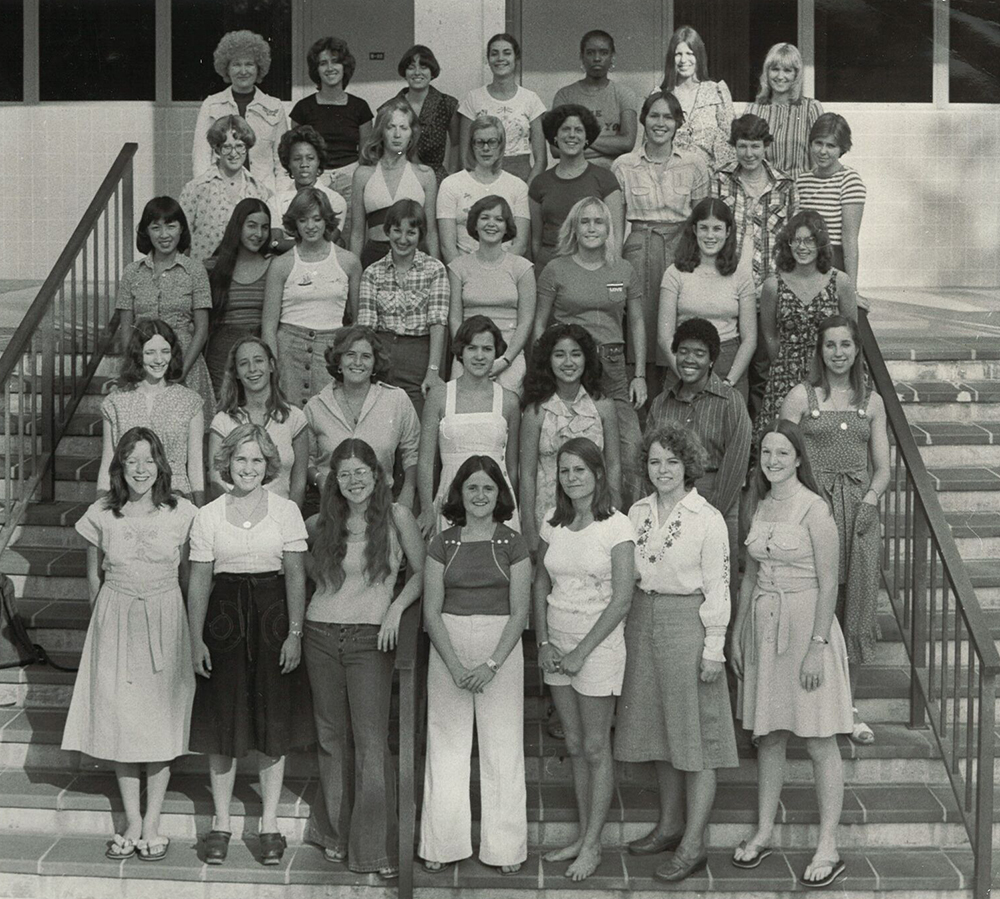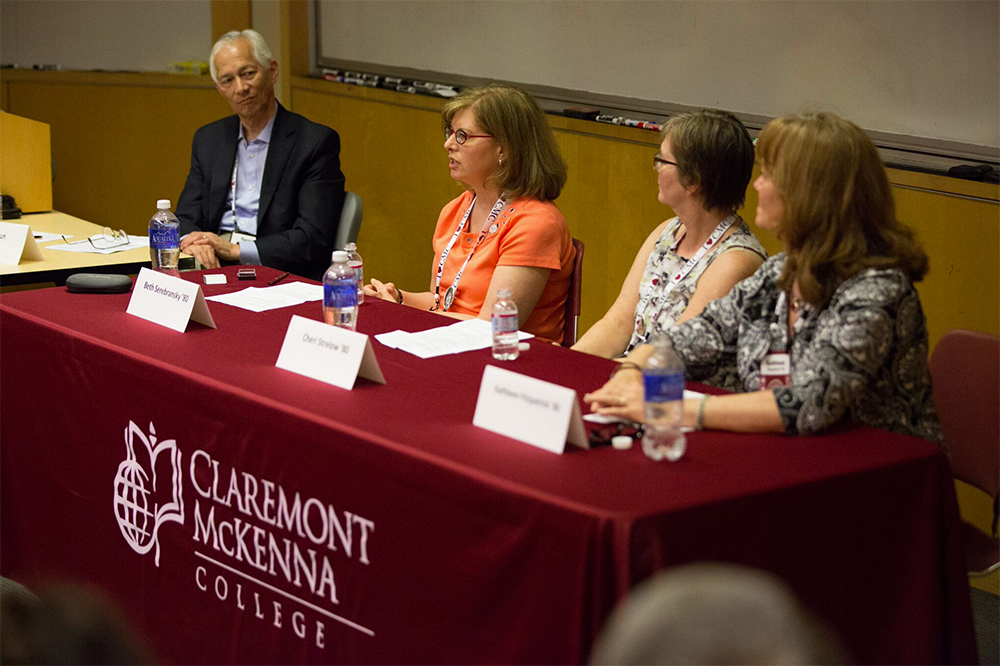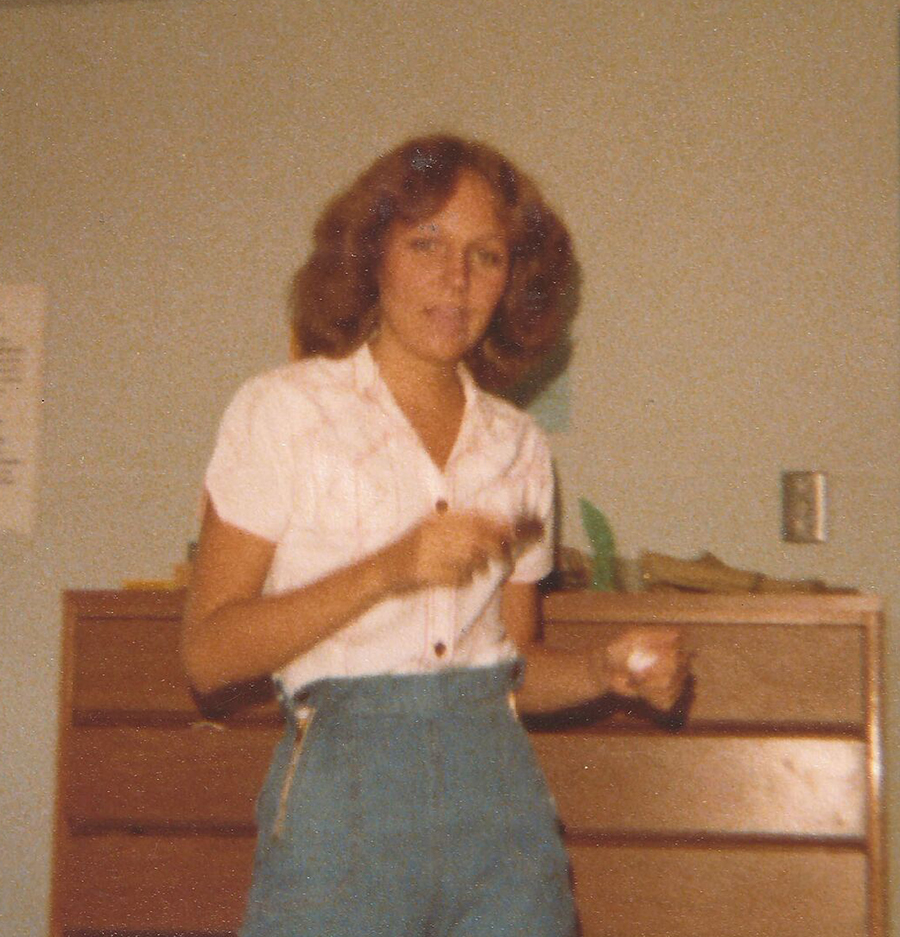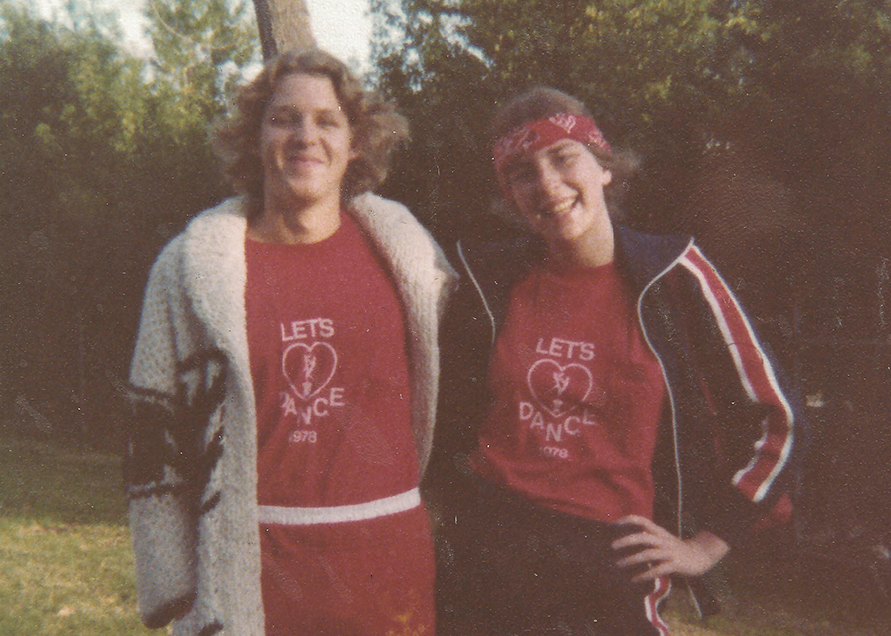Years ago, in 1984, when a new version of her diploma arrived in the mail, Sue Greenberg ’81 didn’t want it. She liked her old one.
The new version looked like the old one, except for one big difference: “Men’s” had been changed to “McKenna.”
As a member of CMC’s “pioneers,” a term used to identify the earliest classes of female students at the College, Greenberg said she was very proud of having “Claremont Men’s College” stamped on her diploma. It was a badge of honor.
“At CMC, I was just as comfortable with the guys as the girls. I viewed things as very gender-neutral,” she said. She fondly remembers her undergraduate career at CMC, which took place in the years right after the College’s transition to coeducation. “I never felt that I was targeted because I was a woman, either.”
This year marks the 40th anniversary of the College’s decision to admit women as undergraduates. The arrival of female undergraduates at CMC, and the eventual replacement of “Men’s” with “McKenna” in the school’s name in 1981, marked a crucial turning point for the young college. For some, in fact, it’s even regarded as the most important milestone in CMC’s 69-year history.
A group of the College’s early female undergraduates—led by Susan Matteson King ’85 P’18 and Eileen (O’Donnell) Goodwin ’81 P’16—have formed the CMC Pioneer Steering Committee with a goal of funding an endowment of $100,000 to support and partner with the Women and Leadership Alliance on at least one workshop per year.

That’s not all. The Pioneer Steering Committee also has conducted a brief survey with alumnae of the first classes of women at CMC during this anniversary year. That work belongs to a larger forthcoming effort to collect the oral histories and experiences of our alumnae and other people crucially involved in the shift to coeducation at CMC.
Looking back
The College’s move to embrace coeducation followed several years of intensive campus discussions and the consulting of all constituencies.
In the early 1970s, a trend toward coeducation was gaining momentum. Many colleges across the nation—Yale, Princeton, Dartmouth, Amherst, and others—were realizing the benefits of coeducation.
They weren’t the first American universities to embrace coeducation—the integration of both genders in American universities dates to the 19th century (see related sidebar)— but the 1970s were years of change and redefinition for many institutions, and single-gender higher education institutions were prompted to reevaluate their original missions in light of their future directions.
By the spring of 1975, CMC voted to join that cultural trend and admit its first female students.
A year later, Kathleen Evans Hurley ’80 P’07 would enter the College’s history books as the first Pioneer when her family mailed in her commitment deposit to reserve a spot in that fall’s entering class for the 1976-77 academic year.
For Jack Stark ’57 GP’11, who served as CMC president during this transition, the move to coeducation had been the College’s most important moment.
“Society had changed very fundamentally,” Stark said in a recent interview. “This was not a pendulum that was going to swing back, and an institution that did not admit women would have had a hard time calling itself a leader.”
The argument for coeducation, following a 28-13 trustee vote, centered on the view that it would create an optimal campus environment, lead to a greater applicant pool, better applicants, and, as Kevin Starr writes in his history of CMC’s first 50 years, it would enable the College to avoid being seen as “an institution that decided on the past and rejected the future.”
The campus culture didn’t change overnight, though. Why should it? There were just under 40 female students enrolled in the very first year of CMC’s coeducation.
That small number of female students is one reason why the dorms of Mid-Quad, for example, remained all male.
For Torrey Sun, who was then serving as Assistant Dean of Students and now works as an officer for the College’s Development Office, the reason why Mid Quad stayed all male in those early years centered on a basic practical issue: There weren’t enough women to fill a whole floor of those dorms.
That seems like a small issue until you consider the communal bathrooms in those buildings.
“It was easier to make a female floor in the Towers, or female suites in North Quad. There were still male urinals in the bathrooms of all of the dorms. But the women were adaptable,” he remembered with a chuckle. “They even put flower pots in the urinals. Clearly, they held their own.”
Pioneers on campus and off
In collecting survey data and talking to CMC’s pioneers for this article, it becomes clear that many of these alumnae were often pioneers in their careers after graduation, too.
Elizabeth Matthias ’81 went on to join a law firm as its first female attorney. She was ready for it, she said, even though people in the firm weren’t. When one of the firm’s accounting clients commented to her, at a holiday party, “Oh, you must work the word processor,” Matthias had her reply ready.

“No,” she said, “but my secretary does.”
Erika (Shabtai) Glazer ’79 worked in real estate management and became the first female member of the executive board of the Golden State Warriors NBA team.
“I was the first woman to be on an NBA board who didn’t inherit that position,” she pointed out.
As an undergraduate, Meredith (Uhlmann) Brenalvirez ’80 had the distinction of serving as the first female senior class president at CMC. It turns out that she was a pioneer in student government as well—and she wasn’t intimidated by her prospects of success, either.
“I intended to win,” she said. “I knocked on every door that I could. I believe the reason I won was because I talked to more people.”
Brenalvirez said another important factor for the Pioneer women was the warmth and welcoming attitudes of the College’s President and First Lady at the time, Jack and Jil Stark.
“Jil, particularly, was very active in her support,” she said. “She wanted to make sure that no one felt like they were in the corner.”
Today, Brenalvirez serves as President of the Board of Directors of Military Women in Need (MWIN), the leading non-profit for women veterans in California.
Scenes from campus life
The Pioneers are realistic about their experiences. They’re proud that they were trailblazers, but they don’t hesitate to say that the early years of coeducation were challenging at CMC.
For Lisa Carlson ’81, her first year was particularly difficult “because the culture, students and professors were struggling to adapt to women on campus.”
But she didn’t expect the campus community to struggle as much as it did, she said.
“It surprised me,” she said, “because the other campuses were coed and I did not think it would be a big deal. But it was. The motto that year said it all—‘Claremont Men’s College, where the men are men and so are the women!’ It did ‘normalize’ though in the next couple of years.”
Even then the College offered abroad curricular experiences, and Carlson said she has fond memories of studying in Copenhagen, where she studied ballet history and took an anthropology course that simulated life in an Iron Age village and required students to live in huts (and even butcher a goat for food).
In their survey responses, several Pioneers emphasized the lasting impact that their professors at CMC have had on their lives.
For Debbie (Lundergan) Starr ’82, the College’s offering of literature classes was something that she took advantage of during her time on campus, including the courses offered by a new arrival, Nicholas Warner.
“Nick Warner’s Russian novel class changed my life,” she said. “I had a chance to read beyond Tolstoy, and Nick gave me an opportunity to do a summer exchange with a group of students from the Soviet Union.”
The close faculty-student interaction that other students identify as one of CMC’s strongest qualities was true of her work with Warner.
“I felt as though he and his wife took me under their wing when I needed a wing,” she said, “and it happened thanks to world literature and making a connection with a culture I would later have a lot of contact with.”

Starr also happened to be the campus’ self-professed “Gross-Out Queen,” and she put her language skills as a literature major to good use. (She was especially talented at coming up with “gross-outs” that didn’t involve obscenities, especially when she was shouting at Appleby students from her Green Hall dorm room.)
Another of CMC’s Pioneers who was a pioneer in another way was Megan Scott-Kakures ’81, who founded the first women’s group on campus, Claremont Renaissance, with Kathleen Dennison ’81. The group also included gay members and female representatives from all classes.
“They had nowhere else to go and we gave them a place,” she said. “We printed our own t-shirts. I still have mine!”
These t-shirts were quite different from the “GCO” t-shirts—an acronym too offensive to spell out in the pages of this magazine—that she said were circulating on campus in the fall of 1979. For her and many others, the GCO t-shirt was a sign that some male students clearly didn’t appreciate having women on campus.
“I was glad I was studying abroad the semester that happened,” Scott-Kakures said. She also remembered helping to organize a “Take Back the Night” march at CMC and contending with jeering from some of the male students in the Mid Quad dorms as their group marched north from the south part of campus.

For Denise (Trotter) Eliot ’82, the fact that the Pioneers received so much extra attention—good and bad—wasn’t a surprise given that there were so few women on campus. But they handled it, she said.
The Pioneers were “independent and motivated, focused on their goals,” she explained. “We didn’t let it bother us. The women were respected. We were doing the same work as the men in our classes. Most of the men were very friendly and welcoming.”
President Emeritus Stark agreed. “The Pioneer Women were smart, tough, and aggressive. They were terrific,” he said. “I am very thankful for all they did for the College.”
Today, at a distance of 40 years, the College’s student body regularly maintains an approximate 50:50 ratio of male to female students.
The Women and Leadership Alliance, which supports efforts across The Claremont Colleges, is an organization drawing on the guidance of the Kravis Leadership Institute, Berger Institute, Robert Day School and other departments on campus. Their work in part preserves and honors the path-breaking efforts of the Pioneers with workshops and events devoted to themes concerning women and leadership.
At a WLA conference held earlier this year at the Athenaeum (see sidebar for more), President Hiram Chodosh acknowledged the CMC Pioneers, some of whom were in the audience, and the College’s coeducational heritage.
“This year,” he said, “we celebrate 40 years of coeducation at CMC. I’m excited to see what the women of CMC will accomplish over the next 40 years.
” A website is coming soon to enable supporters to contribute to the Pioneer endowment and to learn more about the Pioneer Steering Committee’s projects. Look for updates at www.cmc.edu
Lisa Bosley '00 is a freelance writer who dual majored in Economics and Literature at CMC.
Candid conversations
What are America's first coed colleges?


